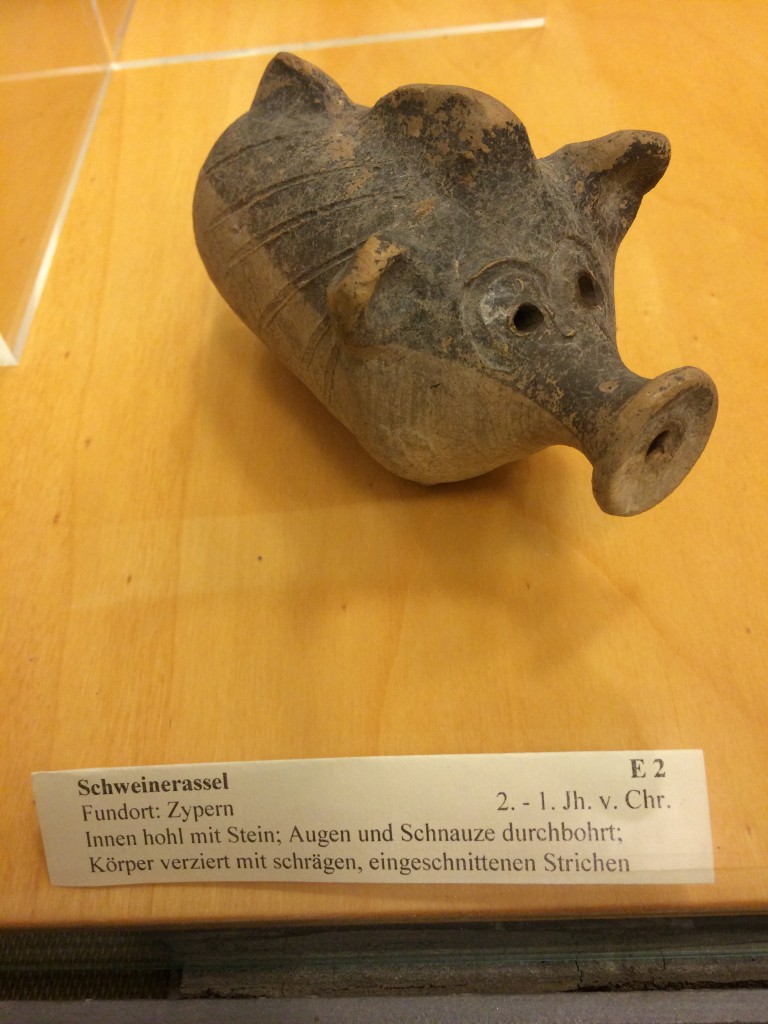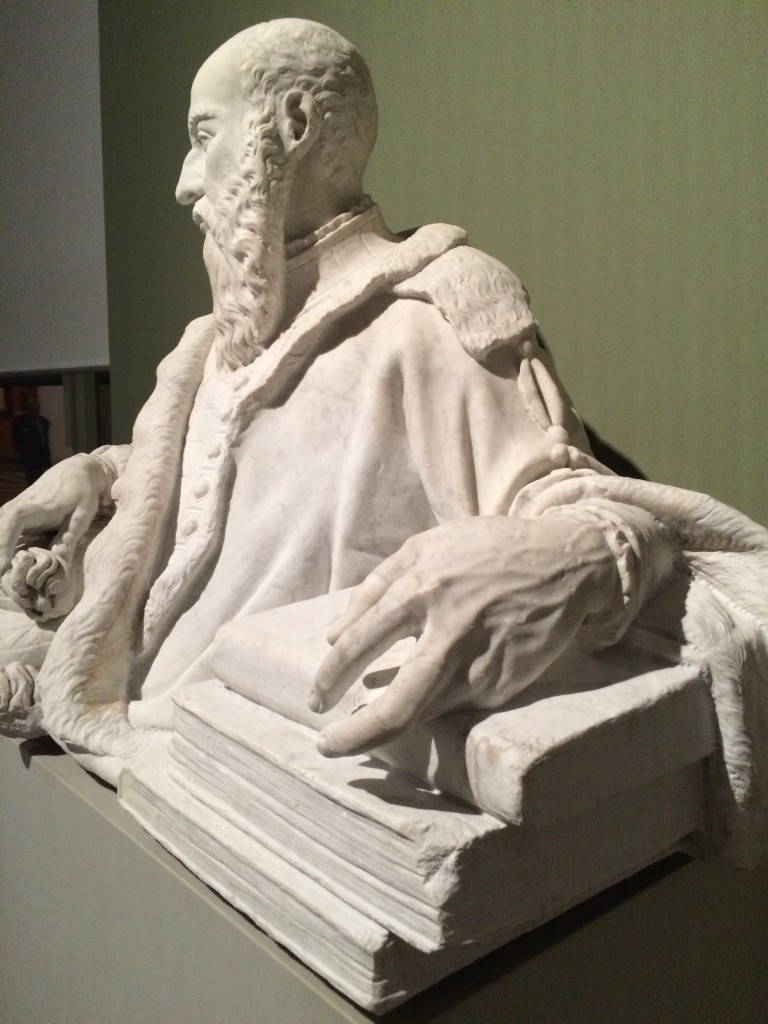Machiavelli and Intellectual Technology, plus Shakespeare & Summer Updates
Hello, patient friends. The delight of brilliant and eager students, the siren call of a new university library, the massing threat of conjoining deadlines, and the thousand micro-tasks of moving across the country have caused a very long gap between posts. But I have several pieces of good news to share today, as well as new thoughts on Machiavelli:
- Most important: I have a new essay up on Tor.com: “When Less Plot is More Play: Love’s Labour’s Lost vs. Pericles Prince of Tyre.” I’m sure anyone who enjoys my usual pieces here will enjoy it in the same way. It’s part of the wonderful Tor.com Shakespeare Reread series, which has a lot of other great authors contributing, so I hope you’ll check out their pieces too.
- The next installment of my Sketches of a History of Skepticism series is 2/3 finished, and I hope to have it up in a week or three, deadlines permitting.
- I have an excellent new assistant named Mack Muldofsky, who is helping me with Ex Urbe, music, research and many other projects. So we have him to thank in a big way if the speed of my posting picks up this summer.
- Because I have a lot of deadlines this summer, I have asked some friends to contribute guest entries here, and we have a few planned treating science, literature and history, so that’s something we can look forward to together.
- For those following my music, the Sundown Kickstarter is complete, and it is now possible to order online the CD and DVD of my Norse Myth song cycle Sundown: Whispers of Ragnarok. In addition to the discs, you can also order two posters, one of my space exploration anthem “Somebody Will” and one which is a detailed map of the Norse mythological cosmos. CD sales go to supporting the costs of traveling to concerts.
-

The finished CD, with its full-color lyrics booklet. So many hours of layout and proofreading, but so worth-it! I have several concerts and public events lined up for the summer:
- At Mythcon (July 31-Aug 2), Lauren Schiller and myself, performing as the duo “Sassafrass: Trickster and King” will join Guest of Honor Jo Walton for “Norse Hour,” in which she will read Norse myth-themed poetry in alternation with our Norse-themed songs.
- Sunday August 9th, I have been invited do a reading of the freshly-polished opening chapters of my novel Too Like the Lightning (due out in Summer 2016) at the Tiptree Award Ceremony event honoring Jo Walton, who couldn’t make it to the initial ceremony but received the Tiptree this year for her novel My Real Children. The event is being held at Borderlands in San Francisco at 3 PM, and will feature readings by local authors, and music performed by myself and Lauren.
- Monday August 17th, at 7 PM, I am joining Jo and Lauren again at Powell’s, where Jo will read from her books, Lauren and I will sing, and I will interview Jo and talk about my writing as well as hers.
- Finally at Sasquan (Worldcon, Aug 19-23) Lauren and I will have a full concert, I will do another reading from Dogs of Peace, and I will be on several exciting panels.

Meanwhile, I have a little something to share here. I continue to receive frequent responses to my Machiavelli series, and recently one of them sparked such an interesting conversation in e-mail that I wanted to post it here, for others to enjoy and respond to. These are very raw thoughts, and I hope the discussion will gain more participants here in the comment thread (I have trimmed out parts not relevant to the discussion):
A little conversation about Machiavelli:
From Michael:

Reply from Ada:
I tend to think of thinkers as toolmakers, or inventors of “intellectual technology”, innovators who have created a new thing which can then be used by many people. New inventions can be used in many ways, and in anticipatable and unanticipatable ways. Just as, for example, carbon steel can be used to raise great towers and send train lines across continents, it can be used to build weapons and take lives, so it is a complex question how much to blame the inventor of carbon steel for its many uses. In this sense, I do believe we can see Machiavelli as a weapon-maker, since the ideas he was generating were directly intended to be used in war and politics. We can compare him very directly to the inventor of gunpowder in this sense. I also see him–and this is much of the heart of my critique–as a defensive weapon maker, i.e. someone working in a period of danger and siege trying to create something with which to defend his homeland. So, imagine now the inventor of gunpowder creating it to defend his homeland from an invasion. Is he responsible for all later uses of gunpowder as well? Is he guilty of criminal negligence for not thinking through the fact that long-term many more people will be killed by his invention than live in his home town? Do the lives saved by gunpowder throughout its history balance out against the lives saved in some kind of (Machiavellian/consequentialist) moral calculus? I don’t think “yes” or “no” are fair answers to such a complex question, but I do think it is important, when we think about Machiavelli and what to hold him responsible for, to remember the circumstances in which he created gunpowder (i.e. consequentialist ethics), and that he invented other great things too, like political science and critical historical reasoning. The debts are complicated, as is the culpability for how inventions are used after the inventor’s death. So while I join you wholeheartedly in wanting to fight back against the distortion of Machiavelli the Mythical proto-modern Republican, I also think it’s valuable to battle against the myth of Machiavelli the proto-Fascist, and try to create a portrait of the real man as I see him, Machiavelli the frightened Florentine.

I do know Bob Black’s Machiavelli book, but disagree with some of his fundamental ideas about humanism itself – another fun topic, and one I enjoy discussing with him at conferences. He’s a challenging interlocutor. There is a very good recent paper by James Hankins on Academia.edu now about the “Virtue Politics” of humanists, which I recommend that you look at if you’re interested in responses to Black.
Best, Ada Palmer, University of Chicago
More from Michael:
Quick response from Ada:
I think “ungodly” does work for Machiavelli depending on how you define it; it has a connotation of being immoral–which does not fit–but if instead you mean it literally as someone who makes his calculations without thinking much about the divine then it fits.

A supplementary comment on “Intellectual Technology”:
I find “intellectual technology” a very useful concept when I try to describe what I study. Broadly my work is “intellectual history” or “the history of ideas” but what I actually study is a bit more specific: how particular kinds of ideas come into existence, disseminate, and come to be regulated at different points in time. The types of ideas I investigate–atomism, determinism, utilitarianism–move through human culture very much the same way technological innovations do. They come into being in a specific place and time, as a result of a single inventor or collaboration. They spread from that point, but their spread is neither inevitable nor simple. Sometimes they are invented separately by independent people in independent places, and sometimes they exist for centuries before having a substantial impact. When a new idea enters a place and comes into common use, it completely changes the situation and makes actions or institutions which worked before no longer viable. I compare Machiavelli’s utilitarianism to gunpowder above, but here are some other examples of famous cases of technological inventions, and ideas which disseminated in similar patterns:
The Bicycle and Atomism
Leonardo da Vinci sketched a design for a bicycle in the Renaissance, and may have seriously tried to construct one, but afterward no one did so for a very long time. Then many other factors changed: the availability of rubber and light-weight strong metals, the growth of large, centralized cities and a working population in need of inexpensive transit, and suddenly the bicycle was able to combine with these other factors to revolutionize life and society in a huge rush, first across Europe and then well beyond. We have moved on from it to develop more complex technologies that achieve the same function, but still use it and develop it more, and even where we don’t, and cities would not have the shapes they do now without it, and it is still transforming parts of the world it has touched more slowly. Similarly atomism was developed and used for a little while, then languished in notebooks for a long time, before combining with the right factors to spread and rapidly transform society and culture.
The Unity of All Life and Calculus
Newton and Leibnitz developed Calculus independently at the same time. Similarly, both classical Stoicism in Greece and Buddhism in India roughly simultaneously and independently, as far as we can tell, developed the idea that all living things–humans, insects, ancients, people not yet born–are, in fact, parts of one contiguous, interconnected, sacred living thing. This enormously rich and complex concept had a huge number of applications in each society, but seems to have been independently developed to meet the demands for metaphysical and emotional answers of societies at remarkably similar developmental stages. The circumstances were right, and the ideas then went on to be applied in vastly different but still similar ways.
Feminism and the Aztec Wheel
 For a long time we thought the Aztecs didn’t have the wheel. More recently we discovered that they had children’s toys which used the wheel, but never developed it beyond that. Which means someone thought of it, and it disseminated a bit and was used in a very narrow way, but not developed further because what we think of as more “advanced” or “industrial” applications (wagon, wheelbarrow) just weren’t compatible with the Aztec world (largely because it was incredibly hilly and didn’t have the elaborate road system Europe developed, relying instead on human legs, stairs, and raw terrain, which were sufficient to let it develop a robust and complex economy and empire of its own. The wheel became more useful in the Americas when European-style city plans and roads were built). Similarly Plato voiced feminism in his Republic, arguing that women and men were fundamentally interchangeable if educated the same way, and people who read the Republic discussed it as a theory among many other elements of the book, but didn’t develop it further (again, I would argue, this was at least in part because the economic and social structures of the classical world depended on the gendered division of labor, particularly for the production of thread in the absence of advanced spinning technology, which is why literally all women in Rome spent tons of time spinning–spinning quotas were even sometimes required by law of prostitutes since if there was a substantial sliver of the female population employed without spinning Rome would run out of cloth. Feminism was better able to become revolutionary in Europe when (among other changes) industrialization reduced the number of hours required for the maintenance of a household and the production of cloth, making it more practical to redirect female labor, and question why it had been locked into that in the first place).
For a long time we thought the Aztecs didn’t have the wheel. More recently we discovered that they had children’s toys which used the wheel, but never developed it beyond that. Which means someone thought of it, and it disseminated a bit and was used in a very narrow way, but not developed further because what we think of as more “advanced” or “industrial” applications (wagon, wheelbarrow) just weren’t compatible with the Aztec world (largely because it was incredibly hilly and didn’t have the elaborate road system Europe developed, relying instead on human legs, stairs, and raw terrain, which were sufficient to let it develop a robust and complex economy and empire of its own. The wheel became more useful in the Americas when European-style city plans and roads were built). Similarly Plato voiced feminism in his Republic, arguing that women and men were fundamentally interchangeable if educated the same way, and people who read the Republic discussed it as a theory among many other elements of the book, but didn’t develop it further (again, I would argue, this was at least in part because the economic and social structures of the classical world depended on the gendered division of labor, particularly for the production of thread in the absence of advanced spinning technology, which is why literally all women in Rome spent tons of time spinning–spinning quotas were even sometimes required by law of prostitutes since if there was a substantial sliver of the female population employed without spinning Rome would run out of cloth. Feminism was better able to become revolutionary in Europe when (among other changes) industrialization reduced the number of hours required for the maintenance of a household and the production of cloth, making it more practical to redirect female labor, and question why it had been locked into that in the first place).
In sum, there is a concreteness to the ideas whose movements I study, a distinct and recognizable traceability. Interpretive analyses, comparative, subjective analyses, analyses of technique, aesthetics, authorial intent, authenticity, such analyses are excellent, but they aren’t intellectual history as I practice and teach it. I trace intellectual technology. Just as the gun, or carbon steel, or the moldboard plow came in at a particular time and had an impact, I study particular ideas whose dissemination changed what it was possible for human beings to do, and what shapes human society can be. It is meaningful to talk about being at an “intellectual tech level” or at least about being pre- or post- a particular piece of intellectual technology (progress, utilitarianism, the scientific method) just as much as we can talk about being pre- or post-computer, gunpowder, or bronze. Such things cannot be un-invented once they disseminate through a society, though some societies regulate or restrict them, and they can be lost, or spend a long time hidden, or undeveloped. Elites often have a legal or practical monopoly on some (intellectual) technologies, but nothing can stop things from sometimes getting into the hands or minds of the poor or the oppressed. Sometimes historians are sure a piece of (intellectual) technology was present because we have direct records of it: a surviving example, a reference, a drawing, something which was obviously made with it. Other times we have only secondary evidence (they were farming X crop which, as far as we know, probably requires the moldboard plow; they described a strange kind of unknown weapon which we think means gun; they were discussing heretics of a particular sort which seems to have involved denial of Providence).

I realize that it would be easy to read my use of “intellectual technology” as an attempt to climb on the pro-science-and-engineering bandwagon, presenting intellectual history as quasi-hard-science, much as we joke that if poets started calling themselves “syllabic engineers” they would suddenly be paid more. But it isn’t a term I’m advocating as a label, necessarily. It’s a term I use for thinking, a semantic tool for describing the specific type of idea history I practice, and linking together my different interests into a coherent whole. When I spell out what I’m working on right now as an historian, it’s actually a rather incoherent list: “the history of atheism, atomic science, skepticism, Platonic and Stoic theology, soul theory, homosexuality, theodicy, witchcraft, gender construction, saints and heavenly politics, Viking metaphysics, the Inquisition, utilitarianism, humanist self-fashioning, and what Renaissance people imagined ancient Rome was like. And if you give me an hour, I can sort-of explain what those things have to do with each other.” Or I can say, “I study how particularly controversial pieces of new intellectual technology come into being and spread over time.”
In that light, then, we can think of Machiavelli as the inventor of a piece of intellectual technology, or rather of several pieces of intellectual technology, since consequential ethics is one, but his new method of historical analysis (political science) is another. We might compare him to someone who invented both the gun and the calculator. How do we feel about that contribution? Positive? Negative? Critical? Celebratory? I think the only universal answer is: we feel strongly.
See more thoughts on this in the follow-up post: Intellectual Technology–A Promoted Comment.
7 Responses to “Machiavelli and Intellectual Technology, plus Shakespeare & Summer Updates”
-
I thoroughly enjoyed reading this new post. As I am reviewing macroeconomics, especially the different variations of Solow Model, I cannot help but link “intellectual technology” with the specific endogenous growth model, which attempts to led the model itself generate technological growth without an exogenous “manna from heaven”. In this model, technology growth is expressed endogenously by the factor capital as “productive externalities”, and individual workers, through “learning by doing,” obtain more “skills” as the capital grows. Of course, the “technology factor” in the model I learned is vaguely defined and does not cover the many definitions and various effects of “intellectual technology” not directly related to economic production.
Your conversation with Michael reminds of me the lectures and seminars I took with you at Texas A&M. By the time I took your Intellectual History from Middle Ages to 17th Century, I have already taken some classes on philosophy. Sadly, my fellow philosophy students and I usually fell into anachronism and criticized early thinkers a bit “unfairly” on many issues. That is why your courses were like a beam of light to me, for I was never aware of the fact that we have different logic, concepts, and definition of words from our predecessors and should hence put those thinkers back into their own historical context.
It seems to me that Prof. Peter E. Gordon’s essay “What is intellectual history’ captures the different angles from which you and Michael construe Machiavelli: Michael seems more like a philosophy/political science student who attempts to examine how and why early thinkers’ ideas work or not work for our society based on our modern definitions, concepts, and logic, thus raising more debates on political philosophy and pushing the progress of philosophical innovation; your role as an intellectual historian requires one to be unattached from our own understanding of ideas and concepts and to be aware of even logic that seems to be rooted in our subconsciousness so that to examine a past thinker fairly without rash judgement. Michael is like the one who attempts to keep building the existing tower upward, while you are examining carefully the foundation below. For me personally, it would be nice to have both of these two different ways of thinking.
I have a question: I have been attempting to read a bit of Karl Marx whenever time allows. He argues that our thinking and ideology are a reflection of our material conditions. If we accept his point of view, would it be useful to connect intellectual history with economic history?
-
Just a brief comment on Leonado’s supposed bicycle. There is evidence that this drawing is a hoax, that was added to the Codex after 1961. A detailed description of the page from 1961 included no mention of a bicycle drawing, merely “the presence of scribbles in black chalk as well as light traces of circles in pen and ink, which appeared to be the beginning of some geometrical diagrams.” This is quite different from the brown crayon used to draw the bicycle.
Welcome back – glad to be able to partake of some more of your erudite writings.
Cheers,
Brent. -
Brent, interesting about the bicycle; I was unfamiliar with that controversy. In Leonardo’s case we can use any number of other things (submarine, heated plumbing, flight) in the same comparison.
Nahua, I think you have hit it spot on with your discussion of Peter Gordon’s essay. When I worked with him at Harvard (I had the privilege of having him on my committee, as well as being his teaching assistant for a course) I remember being struck by how, even when we were teaching thinkers far outside my usual scope like Heidegger, I found his presentation of them welcoming and approachable despite my lack of background, because he approached them in the same context-focused way that I did, evaluating, not their correctness or not or their applicability to the present, but their roots in their contemporary historical contexts and the reasons why they believed what they believed.
For Marx’s comment that “our thinking and ideology are a reflection of our material conditions” I think it is often very useful to connect intellectual history with economic history, not in a strictly deterministic way, but by considering economic changes as major environmental or enabling factors that facilitate or deter intellectual change and/or the dissemination of new ideas. I already discussed the example of how I think the dissemination of feminism in the 19th century was greatly facilitated by the economic liberation of female labor because of the development of industrial cloth production, more efficient ways of doing laundry, cleaning, cooking etc. Ideas about female equality existed in antiquity. They enjoyed a large surge in conversation and support from the intellectual firebrands of the Enlightenment, through figures like Montesquieu, Voltaire and Wollstonecraft. But mass movements and substantial political changes, like female suffrage, came when the economic shift had occurred. To use the “intellectual technology” concept, the technology existed in antiquity and was revived and refined in the 18th century, but it required economic shifts as well to help reach a state when large portions of the population or whole nations/governments could embrace and employ it.
As I work on Renaissance history, I constantly feel the close relationship between economics and the intellectual world as well. Humanism as I understand it began when Petrarch called for a revival of antiquity. Economics comes into this in two ways. First, the reason he thought a revival of antiquity was so desperately necessary was because Italy had become so politically tumultuous and unstable, and was under such threat of cultural or literal invasion from France–these are the consequences, largely, of economic situations, since Italy’s development of banking and its central position as a trade hub for the Mediterranean had filled its small, vulnerable citystates with incomparable wealth, creating situations where powerful families could feud, small powers could hire large mercenary armies, and every king in Europe wanted to invade Italy for a piece of its plump pie. Then after Petrarch, humanism’s ability to spread and succeed was also economically linked. You can’t have a humanist without books, you just can’t, it’s about reading, studying, correcting and living the classics. But in an era when a book cost as much as a house, and more than a year’s salary for a young schoolmaster, a library required a staggering investment of capital. That required wealthy powers–families or governments–to value humanism and have the resources to spend on it. Powers like the Medici, and Florence’s Republican government, were convinced to spend their money on libraries and humanism because they believed it would bring them glory, strength, respect, legitimacy, the love of the people, that it would improve life, heal their souls, bring peace, and make their names ring in posterity, but they couldn’t have made the investment if they hadn’t had the money to invest, and they wouldn’t have believed humanism could yield so much if not for the particular (and particularly tumultuous) economic situation in which Renaissance Italy found itself.
Yesterday I found myself thinking about the history of the book in this light, and comparing it to some comments I heard a scientist make on a panel about space elevators. We all want a space elevator–then space exploration will become much, much less expensive, everyone can afford satellites, space-dependent technologies will become cheap, and we can have a Moon Base, and a Mars program, and all the space stations we want, and all our kids can have field trips to space (slight exaggeration). To have a space elevator, we need incredibly strong cables, probably produced using nanofibers. Developing nanofibers is expensive. What the engineer pointed out is that he has high hopes for nanofiber devlopment, because nanofibers have the ideal demand pattern for a new technology. A new technology like this has the problem that, even if there are giant economic benefits to it later on, the people who pay for its development need a short-term return on that, which is difficult in the new baby stages of a technology when it’s at its most expensive. (Some of you may remember the West Wing episode where they debate the price of a cancer medication, arguing that producing each pill costs 5 cents so it’s unfair to charge more, to which the rebuttal is that the second pill cost 5 cents, but the first pill cost $300 million in research.) Once nanofiber production becomes cheap, absolutely it will be profitable, but while it’s still in the stage of costing $300 million to produce a few yards of thread, that’s a problem, and can be enough to keep a technology from getting support. One of the ways we work around this as a society today is the university system, which (through a form of patronage) supports researchers and gives them liberty to direct research toward avenues expected to be valuable independent of profit. Another is grant funding, which gives money based on arguments for the merit of a project without expecting to be paid back. A third is NASA, which develops new technologies (like velcro, or pyrex) to achieve a particular project (Moon!), which are then used and reused in society for the benefit of all. But looking at just the private sector, at the odds of a technology getting funding from investors rather than non-profits, what the scientist said is that, for a technology to receive funding, you want it to have a big long-term application which will show that you’ll make a steady profit once you can make lots of the thing, but it needs to also to have a short-term application for which a small number of clients will be prepared to pay an enormous amount, so you can sell it while it still costs $300 million, as well as expecting to sell it when it costs 5 cents. Nanofibers, he said, hit this sweet spot because of two demands. The first is body armor, since it looks like nanofibers can create bullet-proof fabric as light as normal fabric, and if we can do that then governments will certainly pay an enormous amount to get bullet-proof clothing for a head of state and his/her bodyguards, and elite military applications. The second is super-high-end lightweight golf clubs, which may seem like a frivolous thing, but there are people who will pay thousands of dollars for an extremely high end golf club, and that is something nanofibers can profit from even while expensive (super lightweight bicycles for racing also qualify). So nanofibers can depend on the excitement of the specific investors who want the expensive version now, and through their patronage develop toward the ability to produce things cheaply.
In this sense the history of the book, especially in the Renaissance, was very similar to the situation with nanofibers. In the early, manuscript stage when each new book cost the equivalent of $50,000 (very rough estimate), libraries were built and humanism was funded because wealthy people like Niccolo Niccoli and Cosimo de Medici believed that humanist libraries would give them and their home city political power and spiritual benefits, helping them toward Heaven. That convinced them to invest their millions. Their investments then created the libraries which could be used later on by larger populations, and reproduced cheaply through printing once it developed, but printing would not have developed if patrons like them weren’t around to make there be demand for the volume of books printing could produce. It took Petrarch, Niccoli and Cosimo to fund a library which could raise a generation of people who could read the classics before there was enough demand to sell the 300-1500 copies of a classical book that a printing press could print. And, working within current capitalism, it may take governments who really want bullet-proof suit jackets to give us our space elevator, though universities, NASA, and private patronage of civilian space programs are certainly also big factors pushing us forward.
In sum, I would say that economics sometimes sparks the generation of new ideas–as the economically-driven strife Petrarch experienced enabled the birth of humanism–but it also strongly affects how easily or quickly a new idea can disseminate, whether it gets patronage and support, or whether its champions have to spread it without the support of elites, patrons or government. Thus, in any given era, an intellectual historian needs to have a sense of funding patterns and patronage systems, so we can understand how ideas travel, where, and why.
-
One more thought from last night, or rather a test comparison showing how the concept “intellectual technology” can work. I was thinking about comparing atomism and steel.
Steel is a precursor for building skyscrapers. Despite urban demand, we didn’t get a transition to huge, towering metropoles until the development of good steel which could raise our towers of glittering glass. Of course, steel is not the ONLY precursor of the skyscraper–it also requires tempered glass, etc. And it isn’t the only way to build skyscrapers, you can use titanium, or nanotech, but you are very unlikely to get either of those things without going through steel first. Having steel does not guarantee that your society will have skyscrapers. Ancient Rome had steel. In the Middle Ages Europe lost it (though pretty-much everywhere except Europe still had steel). When steel came back in the Renaissance it still didn’t lead immediately to skyscrapers, it required many other developments first, and steel had to combine with other things, including social changes (growth of big cities). But when we look at the history of city development, studying steel is extremely important because the advent of steel-frame construction is a very important phase, and a central enabling factor for the development of modern cities.
My Lucretius book looks at the relationship between atomism and atheism in the same way that this analysis looks at steel and skyscrapers. Atomism was around for a long time, went away, came back, etc. And you can have non-atomic atheism, we have lots of it now. But atomism, as the first fully-developed mechanical model of the working of Nature (the first not dependent on God/gods to make the world work) was, in my opinion, one of the factors that you needed to combine with other developments to reach a situation in which an intellectual could combine mechanical models of nature with skepticism with other factors to develop the first fully functional atheistic model of the world. It’s one of the big factors we have to trace to ask “Why did atheism become a major interlocutor in the history of thought when it did, and not before or after?” just as tracing steel helps us answer “Why did skyscrapers start being built when they did?” There had almost certainly been atheisms before and independent of atomism (just as you can make really tall things, like pyramids or cliff-face cities, without steel-frame construction) but it was rare, and didn’t have the infrastructural repeatability necessary to let it become widespread. Modern atheists don’t use Epicurus, they more frequently use Darwin, just as modern skyscrapers use titanium, but the history of skyscrapers becomes clear when we study the history of steel. Just so, the history of atheism becomes much clearer when we study atomism. Of course, we now use steel for lots of things that aren’t skyscrapers (satellite approaching Pluto!), and similarly atomism has lots of non-atheist applications, but we associate atomism a lot with atheism, just as we think a lot about “towers of glass and steel” and usually think less about the steel bolts in our chairs or the steel spoons we eat with. All applications of steel, or epicuranism, can be worth studying, but skyscrapers/ atheism will never stop being one of the biggest and most interesting, at least in terms of how they changed the face of our modern world. And finally, while minority of buildings are skyscrapers, and a minority of contemporary people are atheists, the study of both is broadly useful because the presence of both in the lives of everyone is a defining factor in our current world.
-
third is NASA, which develops new technologies (like velcro, or pyrex) to achieve a particular project (Moon!)
NASA developed a lot of technolgies that later entered daily life but Velcro(tm) (1948 Switzerland) and pyrex (1915) are not among them. NASA had nothing to do with the development of Teflon nor Tang also.
the history of skyscrapers becomes clear when we study the history of steel
While you ill not have skyscrapers without steel, they are not practical until you add the later invention of safe elevators.
ut not developed further because what we think of as more “advanced” or “industrial” applications (wagon, wheelbarrow) just weren’t compatible with the Aztec world (largely because it was incredibly hilly and didn’t have the elaborate road system Europe developed, relying instead on human legs, stairs, and raw terrain, which were sufficient to let it develop a robust and complex economy and empire of its own.
I think you are literally putting the cart ahead of the horse here. Please let me explain:
It seems that the wheel for transportation or more precisely fixed axle and rotating wheel system was invented once about 3500 BCE, probably in modern Ukraine. It spread from there thoughout the old world. The Aztec object is the only evidence we have of independent invention anywhere. The wheel reached for example the Bristish Isles about 500 BCE without the benefit of a road network. I would like to snark here about who would bother to build a road if they did not have wagons to use it but I am restrained by historical examples that they did. Most famously the Roman road system was built for marching legions with wheeled transport an afterthought. Europe didn’t get a good system of roads until almost modern times (excepting the aforementioned surviving Roman roads. Long distance freight transport was by water.
What do you need to make a wagon? You need access to wide slabs of wood from thick-trunked trees in order to carve large, round wheels. You need good carpentry skills and tools to make the axle fit snugly, but not too snugly, inside the wheels. This appears to require metal tools since the axle wheel combination did not appear until half a millennium after cast copper tools became common in the Near East.
The Aztecs had wood. They had cast copper objects but perhaps not tools. Let us look where they got the copper objects from originally.
The Inca had cast copper tools. They had wood, They even had an extensive road system. Why did they not have wheeled vehicles?
For a wagon to be really useful it needs one more thing that I have not mentioned: an animal to pull it. Horse, donkey, ox you name it but wagons really make sense only if you have draft animals. The only candidate draft animal in the Americas is the llama which is not robust enough.
You mentioned wheel barrows. For Europe the first wheel barrow did not appear until atleast 3 millenia and maybe 4 1/2 millennia after the invention of the wheel (~500 BCE to 1000 CE). They seem to have appeared in China around 100 CE. Definitely a secondary use of the wheel.
-
Yes, that’s a good reminder to me of how I need to get on top of finishing my history of skepticism series. I have read five different histories of the development of the wheel, each covering Europe, Asia and the Americas, and each with confident and yet totally contradictory timelines of what was developed when, and contradictory narratives about why. Similarly with skyscrapers – one urban history will discuss steel as THE important factor, another tempered glass, another elevators, another plumbing improvements, much as discussions of the spread of feminism will sometimes point to the bicycle as the turning point, sometimes to the train, sometimes to the spinning jenny. It’s clear to me that these kinds of histories, histories of technology as well as histories of intellectual technology, are still very new, though we’ve been at it a couple decades, and we’re still filling in the basics, the initial histories written by specialists which necessarily focus on the aspects that X specialist is aware of. Certainly, for example, my own history of skepticism in its present state focuses on the aspects I’m most familiar with (Epicureanism, neoclassical movements, medieval scholasticism) much as a history of skyscrapers written by a mechanical engineering specialist might focus on elevators, and one by a metallurgic specialist might focus on steel. It will be very exciting to see what happens in another 20 years when this kind of history has been practiced enough that another scholarly generation can build on these specialist-perspective histories to create more synthetic retrospective histories, offering a new stage of approaches for letting us understand how technologies (intellectual and material) diffuse.
-
In China, wheelbarrows filled/exceeded the role in overland transport played by wagons in Europe. This post by low tech magazine is a good overview: “The Chinese wheelbarrow – which was driven by human labour, beasts of burden and wind power – was of a different design than its European counterpart. By placing a large wheel in the middle of the vehicle instead of a smaller wheel in front, one could easily carry three to six times as much weight than if using a European wheelbarrow.”
Interestingly, it emerged only in the wake of a complex and comprehensive road + axle infrastructure built by the Qin (they standardized axle length to match road width!), and with accessible (but relatively costly) animal power. So perhaps human-powered wheelbarrows is a technology that can only emerge through the transitionary form of animal-powered carts.
-



